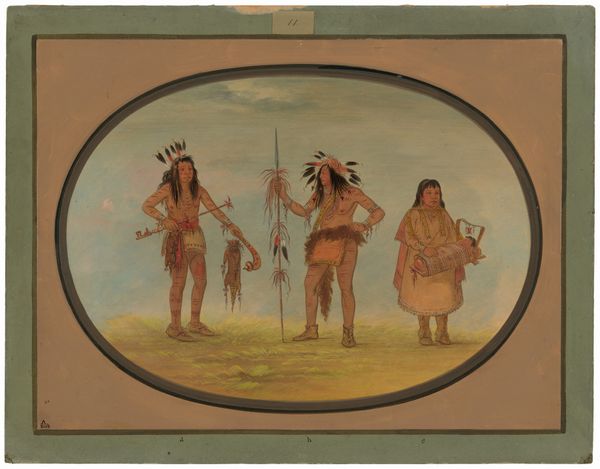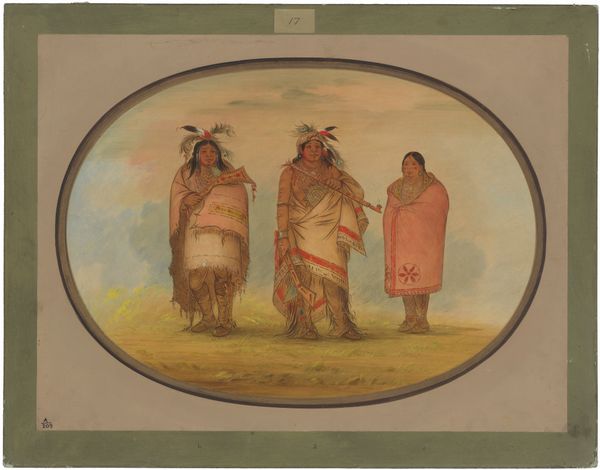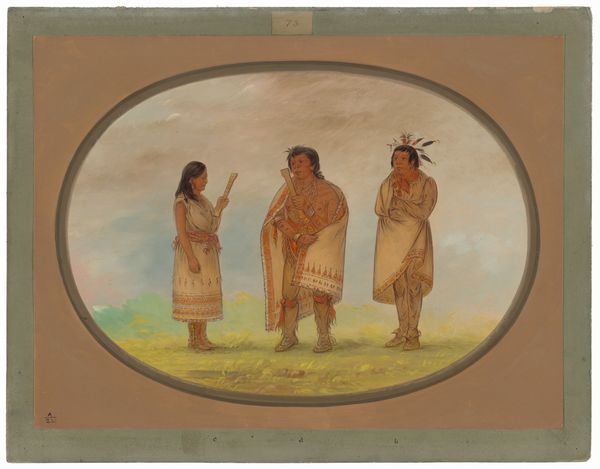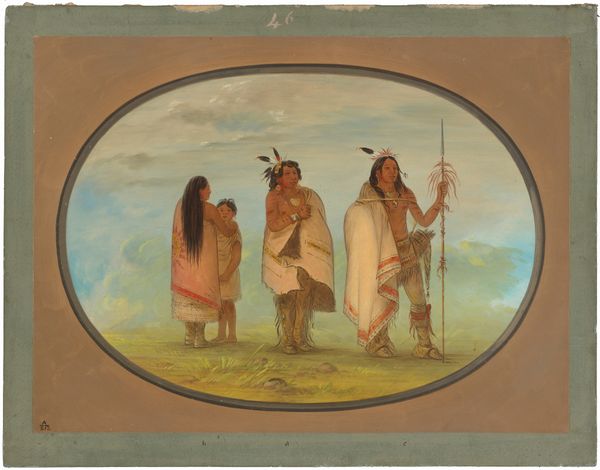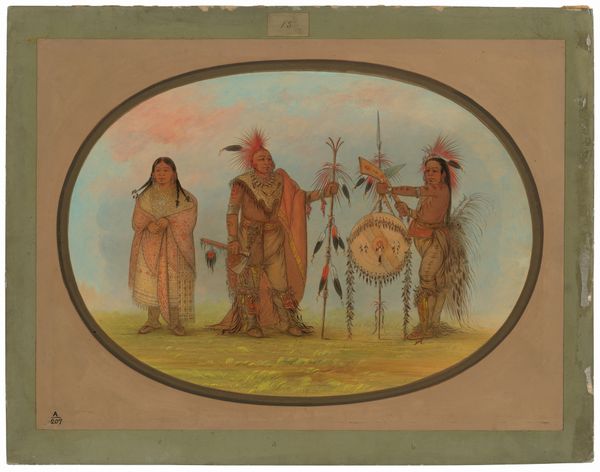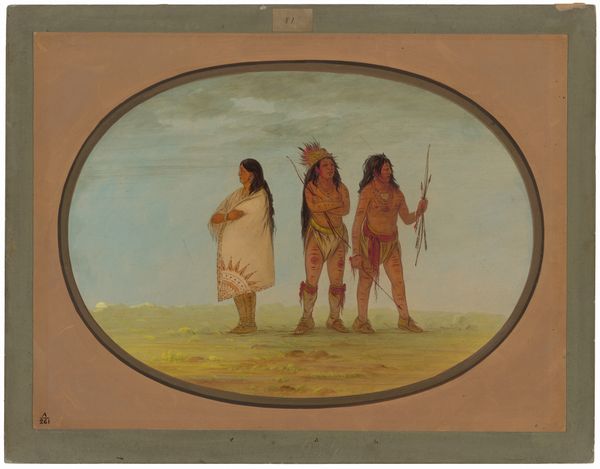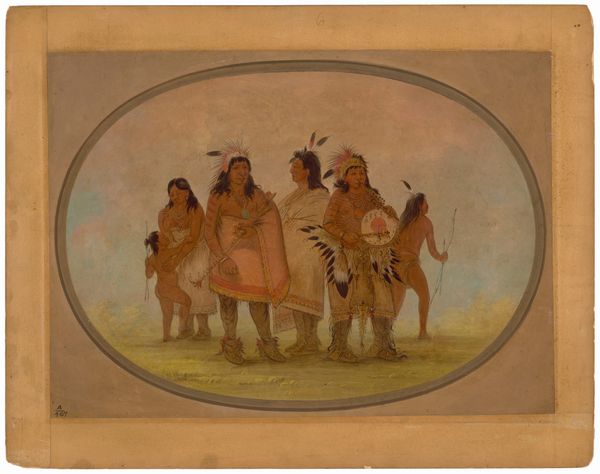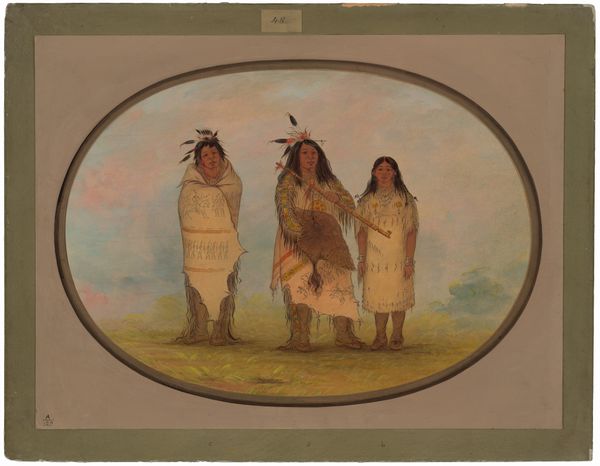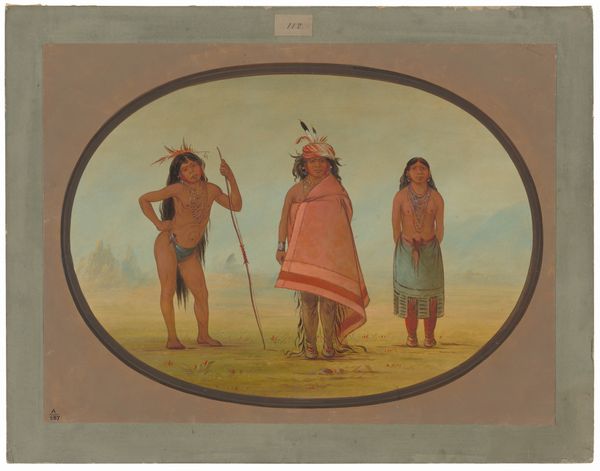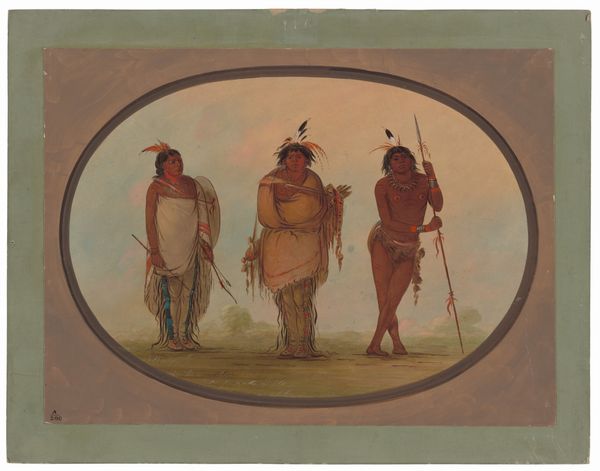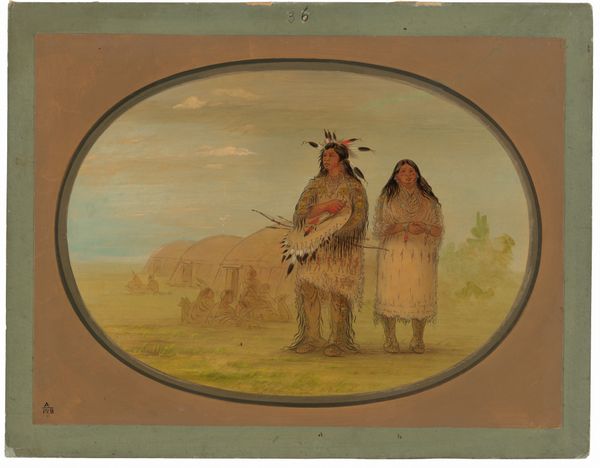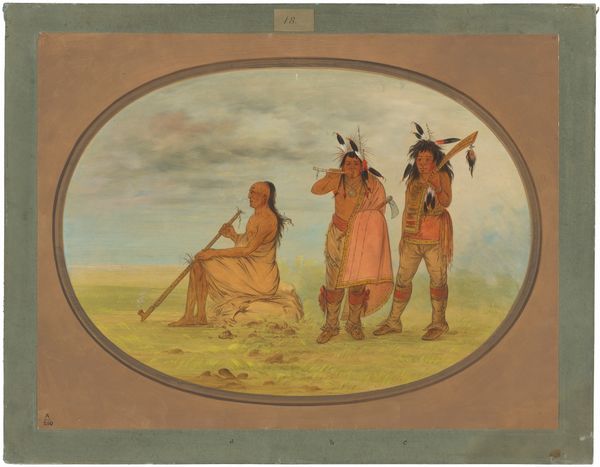
painting
#
portrait
#
water colours
#
painting
Dimensions: overall: 47.5 x 63.9 cm (18 11/16 x 25 3/16 in.)
Copyright: National Gallery of Art: CC0 1.0
Curator: Right, let’s turn our attention to "Saukie Warrior, His Wife, and a Boy" by George Catlin, likely created between 1861 and 1869. Editor: There's an interesting stillness to this group portrait. They’re almost suspended against the barest landscape—a gentle green fading into sky-blue, encased in this kind of oval, dreamlike space. Curator: Dreamlike is a perfect description. Catlin’s approach blends observation with a deep empathy, a yearning, really, to document a vanishing way of life as interactions with colonizers escalated. Look closely, and the texture gives it away as watercolor on paper. Editor: Exactly! Knowing it's watercolor shifts my perspective. It feels less like a formal, imposing oil painting and more intimate, fragile. Makes you wonder where he acquired the materials, the paper and pigments, and how that access shaped his ability to record this family. Curator: Absolutely. The artist chose watercolor, maybe as the means to work more rapidly across distances and different spaces with the tribe. Catlin even traveled and lived amongst various Indigenous nations for years. This work isn’t just a rendering of individuals but a capture of presence and identity in a fleeting moment. The materials speak to that very process of documenting change. Editor: I notice the detailed textures of the man’s clothing and gear compared to the other figures—the feathers, the textures of hides. What do these say about resource allocation and power dynamics represented here? Curator: Well, those are not idle ornaments—the shield is incredibly prominent with what looks like a sunburst motif and medicine bundle. It suggests a life intertwined with nature and deep spiritual understanding. I see them almost as visual poems, carefully considered artifacts in Catlin’s archive of memory. Editor: Indeed, consider too that the material culture Catlin presents became highly collectable – transformed into commodities, which contributed in complex ways to both knowledge and exploitation. Curator: You’ve made me think more carefully about its complicated legacy, so different than when I just see them standing there in a misty past, holding on, somehow. Editor: That’s what is remarkable: to see an object and simultaneously consider the journey of the materials to communicate something about that journey for all.
Comments
No comments
Be the first to comment and join the conversation on the ultimate creative platform.
